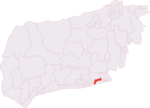Lancing Carriage Works
London, Brighton and South Coast RailwayRailway workshops in Great BritainUse British English from January 2017
Lancing Carriage Works was a railway carriage and wagon building and maintenance facility in the village of Lancing near Shoreham-by-Sea in the county of West Sussex in England from 1911 until 1965.
Excerpt from the Wikipedia article Lancing Carriage Works (License: CC BY-SA 3.0, Authors).Lancing Carriage Works
Chartwell Road, Adur
Geographical coordinates (GPS) Address Nearby Places Show on map
Geographical coordinates (GPS)
| Latitude | Longitude |
|---|---|
| N 50.823 ° | E -0.331 ° |
Address
Chartwell Road
BN15 8FD Adur
England, United Kingdom
Open on Google Maps







